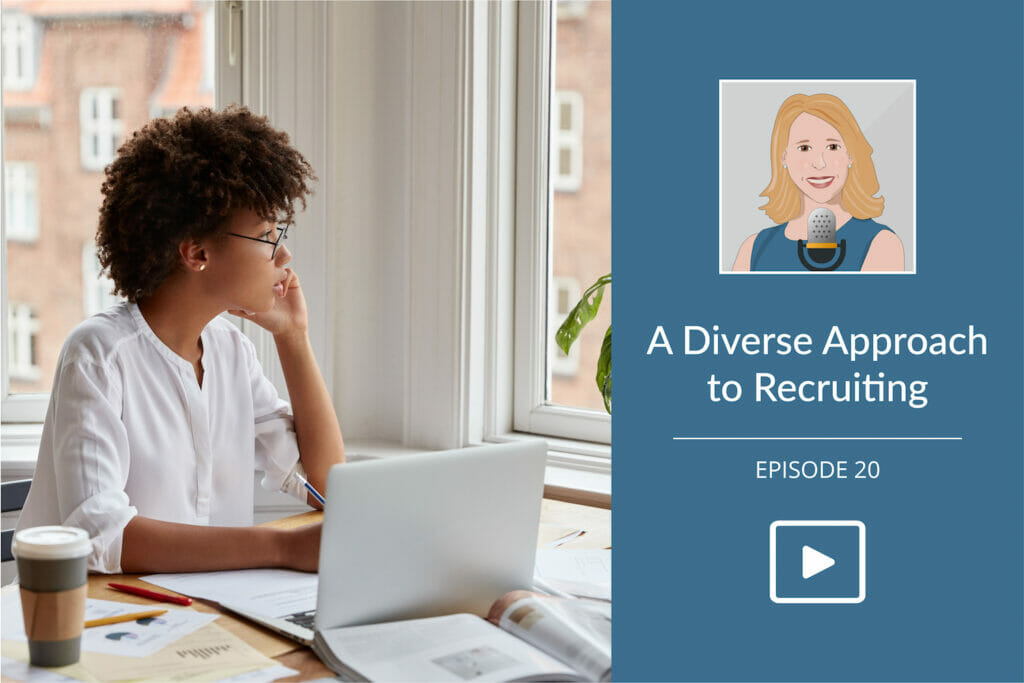
Gen Z, You’re Hired! Prepare Your Organization for a New Generation of Employees
AUG 16, 2019
The job market is hot. Your company invested heavily to compete for this year’s top grads and you are about to welcome a whole lot of Gen Z into your organization over the next few months. Around this time of year, I like to remind clients that the war for talent does not end once your new recruits walk through the door. With up to five generations to consider, the way you welcome “iGen” will be an important ingredient for building a collaborative, productive and winning culture.
What we know about Gen Z
Generation Z, made up of people born between 1995 and 2010, is a generation best known for growing up in a world of 24/7 digital access. According to Kira Copperman, author of Gen Speak®, the recession of 2008 had a profound impact on Gen Z’s experience, many living through the loss of their homes, parents who lost their jobs, and multiple generations living under one roof. They observed Millennials struggle with the skyrocketing cost of higher education, while acceptance into top colleges became increasingly difficult. Nearly half of Gen Z are considered racial or ethnic minorities, compared with 39% of Millenials and 30% of Gen Xers.
This unique confluence of technology, diversity, and economy will make this generation a powerful addition to our workforce, but I recommend organizations take the time thoughtfully and deliberately to integrate the most recent generation into our organizations.
Nine ways to welcome your Gen Z recruits:
1. Invest in high-impact onboarding.
Regardless of generation, building a strong onboarding program is like an early insurance policy on the investment you made in recruiting. Gone are the days of onboarding by handing a new hire a sticky note with the extension for IT support. Effective employee onboarding can improve employee retention by 82% and productivity by over 70%. Despite these findings, Gallup found only 1 in 10 employees felt their organization did a great job with onboarding. It can take nine months or more for an employee to truly hit their stride, so I recommend companies think about this time as an extended courting period. In addition to the more administrative onboarding activities (choosing benefits, getting a computer set up, etc.), go the extra mile to really remind new recruits why they are important and remind them of some of the reasons they took the job. Don’t just teach them job tasks, but provide soft skills support as well.
2. Avoid unproductive generational stereotypes.
There has been so much good work done over the past ten years about the multigenerational workforce and how to manage work-style differences among these groups. In the process, we have created “descriptions” of Baby Boomers, Gen Z and everyone in between. While much of this information has been insightful and relevant (i.e., experience with technology, learning methods, the economy), I caution organizations from assuming that the beliefs and behaviors that have come to describe a generation will apply to all of its members. Millennials have become poster children for many things, including this kind of excessive stereotyping. Welcome your new recruits as individuals by taking into account their unique generational experiences, without overemphasizing related stereotypes.
3. Treat the multi-generation workforce like any other diversity initiative.
As we think about welcoming this year’s Gen Z recruits, remember that the multigenerational workforce is no different than any other diversity initiative – its primary goal is to enable people to come to the office as their authentic selves, have access to opportunities, and to do their best work. The multigenerational workforce works when we focus on blending the strengths of each generation. For example, rather than criticizing Gen Z for “speaking in memes” or not looking up from their phones, notice how well they solve problems independently through the use of technology (i.e., YouTube tutorials). Rather than treat Baby Boomers as “dated”, maximize the value of their institutional knowledge. Imagine the synergy created by these two strengths combined. Consider pairing a Baby Boomer and a Gen Xer to create content that demonstrates deep knowledge in a modern format.
4. Observe: who is teaching who?
Stereotypes aside, there are some important things about the way Gen Z learns and works that will surely have an impact. According to Jason Dorsey of the Center for Generational Kinetics, we can expect Gen Z to be the first to change the work behavior of previous generations, rather than the other way around. Up until now, we have seen new generations enter the workforce and quickly get “schooled” on the way things are – a Gen Xer showing up with no idea how to use a fax machine, or a millennial being told not to use text abbreviations in client emails. Thanks to the rapid pace of technology disruption, consider the reverse – a Gen Z employee collecting money for a teammate’s baby shower and teaching their manager how to pay by Venmo. This generation is likely to shake things up even more than those that came before them, so encourage other generations to embrace change in preparation.
5. Make communication short, sweet and accessible.
Technology has enabled content to become so rich, tag-able and searchable that long documents are a thing of the past. Gen Z learners are not accustomed to wading through large amounts of material to find the information they need, and other generations are quickly adapting to the power of communicating in powerful, bite-sized chunks. As you think about integrating this year’s recruits, it is a great time to revamp training and onboarding material to be as useful and accessible as what you might find on YouTube. Beyond HR, create a model for other groups to revamp their internal communication and training materials for today’s consumptions style and speed.
6. Allow for in-person communication and personal privacy.
While Gen Z might not know a life outside of technology, keep in mind that they grew up seeing both the upside (i.e., productivity) and the downside (i.e., breaches of privacy). As a result of this experience, we encourage employers to be clear and upfront about efforts to protect employee and customer privacy, create opportunities for face-to-face communication, and rethink floor plans (when possible) to allow for increased privacy and small group collaboration. In Lindsey Pollak’s new book, The Remix: How to Lead and Succeed in the Multigenerational Workplace, I remind leaders to go back to basics and get to know people – break bread. Regardless of technology, everyone has this invisible necklace that says, “I am important, pay attention to me,” and basic relationship development goes a long way.
7. Offer “self-serve” learning and development.
Similarly, expect Gen Z to dramatically change how we think about Learning and Development. We are welcoming in a generation that has done a lot to train themselves. Consider the 15-year-old that builds a high-performance gaming PC by watching YouTube videos, or resolves a computer virus by Googling a solution. This generation cannot remember a time when answers were not at their fingertips and this will likely impact the way they go about their work. We already see a trend towards making high volumes of content available, on-demand, rather than prescribing a one-size-fits-all learning path. Support managers as they rethink setting job expectations, focusing more on outcomes and expectations and less on step-by-step tasks.
8. Encourage these “activists with ingenuity.”
According to Gen-Speak author, Kira Cooperman, Gen Z can be described as activists, “ and can be motivated by efforts in support of a cause.” To put this in further context, Wright State University professor, Corey Seemiller, shares a powerful example of how this mindset can impact the quality of work. She noticed a decline in enthusiasm for a mandatory volunteer component to her course and began to wonder if Gen Z was less likely to give back. Quite the contrary. With access to so much information and “How To’s” these students were less likely to volunteer a few hours in the soup kitchen, but more likely to find a solution to the root cause of hunger in their area. As you continue to build a winning culture, keep Gen Z motivated with opportunities to make a difference. This kind of “build-it/fix-it” mindset is also likely to have a huge impact on productivity and innovation in our organizations, but also our world.
9. Get ready to redefine diversity.
With half of Gen Z identifying as a minority, the idea of corporate diversity will start to take on a new meaning. Much time has been spent in the D&I space helping organizations create programs that help employees feel comfortable and productive working with people who are not like them. We have business cases to prove the benefits of diversity and resources for overcoming obstacles. Expect these types of programs to feel foreign to many Gen Zers. According to Jason Dorsey, Gen Z is so diverse, they don’t notice, “they don’t notice diversity unless it’s absent.” In other words, much of Gen Z (not all, remember not to overgeneralize) grew up learning and working as diverse groups. I am not suggesting abandoning your diversity initiatives, but to leverage Gen Z’s powerful experience with natural diversity.
Technology disruption has transformed every aspect of our businesses. We are now welcoming the generation that only knows the “post-disruption” world, and I expect their contributions to be both powerful and transformative. To learn more about how Inspire works with clients to make the most of their multigenerational culture, contact me at hello@inspirehumanresources.com or (917) 612-8571.



